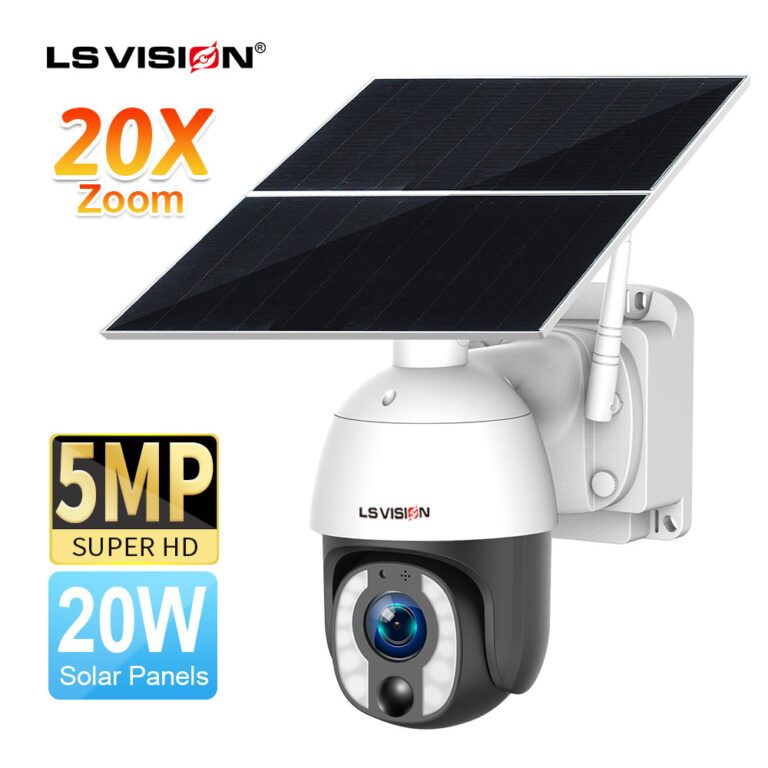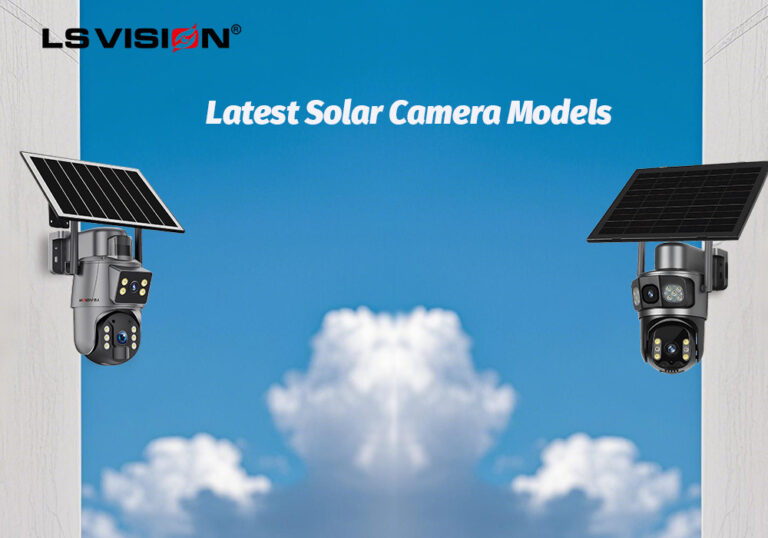In This article will address some common inquiries customers have when considering hunting cameras from LS Vision. We will explore questions about the technology powering these cameras, suitable installation locations, key product specifications, and performance parameters.
How do LS Vision solar hunting cameras work?
LS Vision hunting cameras harness the renewable power of the sun through built-in photovoltaic solar panels. During the day, the solar panels absorb sunlight and convert it into electrical energy that charges a lithium battery. This stored power then runs the fully wireless camera operations at night or on cloudy days. The integrated 4G module in models like the LS-HM1-4G allows remote live streaming and playback from anywhere via the UCon mobile app.
Table of Contents
Toggle- How do LS Vision solar hunting cameras work?
- Which locations are solar hunting cameras best suited for?
- How long will the battery last and what charging times?
- What key camera features do customers ask about?
- What areas can a single camera monitor?
- What applications do you recommend solar cameras for?
- Are the hunting cameras easy to install?
- What kind of data storage do the cameras support?
- How do the night vision modes compare to competitors?
- Which model is best for forest surveillance?
- Which camera is suitable for open grasslands?
- Which model works well for farm perimeter checks?
- Which camera model is best for hilly terrains?
- What do verified customers say about LS Vision cameras?

Which locations are solar hunting cameras best suited for?
Our IP66 weatherproof cameras, manufactured by leading CCTV camera manufacturers, withstand harsh outdoor environments like farms, forests, and construction sites. Their compact designs and versatile mounting accessories make them ideal for open areas without power lines. Wall, pole, or tree mounting ensures versatile coverage wherever surveillance is needed. Durability and no wiring requirements make these solar panel CCTV cameras a cost-effective choice for remote locations.
How long will the battery last and what charging times?
On average, the lithium battery lasts 1-2 weeks depending on use like trigger frequency. Models differ too – the high capacity LS-HM1-4G lasts over a month. On sunny days, it takes 6-8 hours to fully recharge from the integrated solar panel. Proprietary power algorithms maximize runtime using sleep modes when no motion is detected.
What key camera features do customers ask about?
Customers often inquire about megapixel sensors, storage options, connectivity, and night vision. Our cameras, made by top CCTV camera manufacturers, offer a 2MP-8MP resolution, dual microSD/cloud storage, WiFi or 4G access, PTZ controls, and infrared LEDs providing 15-40m low light coverage. Two-way audio and intelligent alerts optimized for remote wildlife or asset monitoring are also popular questions.
What areas can a single camera monitor?
With 100-degree wide-angle lenses, our baseline solar panel CCTV cameras provide coverage within 50-70m during the day. Meanwhile, PTZ models like the 10x zoom LS-HM1-4G allow clearer identification and detail capture from as far as 300m away. Multiple camera installations or higher megapixel sensors further expand the effective monitoring range for different property sizes and perimeters.
What applications do you recommend solar cameras for?
Aside from agriculture, solar panel CCTV cameras are used in applications like perimeter security, infrastructure inspection, trail monitoring, and wildlife observation. Their flexibility has made them popular for remote construction sites, off-grid outdoor projects, as well as personal and commercial property surveillance in rural areas. 4G solar PTZ camera models especially support remote staff safety and unmanned asset monitoring across industries.
Are the hunting cameras easy to install?
Setup is straightforward – the mounting brackets let you attach to surfaces in minutes. Configuring via the mobile app involves simple on-screen instructions like selecting the network and playback is equally intuitive. This plug-and-protect functionality gets them up and running fast without fuss even for non-tech-savvy users.

What kind of data storage do the cameras support?
Our solar panel CCTV cameras support versatile storage with encrypted microSD card slots for local backup, as well as optional cloud backup using the mobile app. This dual redundancy protects critical video evidence from power failures. Cloud plans offer rolling 7-30-day playback based on the package for off-site event review and investigation as needed.
How do the night vision modes compare to competitors?
LS Vision’s night vision stands out with enhanced low-lux sensitivity. Infrared LED arrays combined with color or black-and-white modes deliver clearer imagery over greater distances than other solar cameras. Users report being able to recognize faces 30% further away compared to similar-priced trail cameras from competitors. This performance edge aids nighttime monitoring and identification.

Which model is best for forest surveillance?
The LS-MS3A series offers superior coverage of expansive forested areas through its long-lasting battery, powerful zoom lens, and AI tracking. Customers have been able to monitor animal movements deep inside forests for 3-5 days continuously during testing. Its dual-lens design further widens visibility.
Which camera is suitable for open grasslands?
For monitoring livestock or tracking wildlife across savannahs and plains, the LS-WS20L-20X with its 20x zoom, strong battery, and dual solar charging helps identify objects from over 500m away. Farmers have reported detecting intruders through this model from distances beyond competitors provided.

Which model works well for farm perimeter checks?
The durable LS-4GS10 offers reliable boundary monitoring with motion recording and low maintenance. Its IP66 build withstands weather and its 7,800mAh battery plus 4G ensures several weeks of surveillance. Farmers have reported continuing unattended perimeter checks for over 2 months during tests.
Which camera model is best for hilly terrains?
The LS-4GS17M stands out in terrains like rolling hills with 360-degree maneuverability and AI tracking. This fully optimizes visibility across slopes for users scouting cattle over 1500 acres in Australia. Its flexible mounting has adapted surveillance to undulating landscapes.
What do verified customers say about LS Vision cameras?
Reviews highlight reliable performance even in the harshest environments. One farmer appreciated a clear night vision for monitoring livestock. A safari camp manager favored versatile mounting and dual storage options. Others liked long battery life compared to competing models. Overall, customers value hassle-free wireless monitoring combined with rugged builds optimized for solar operation.















